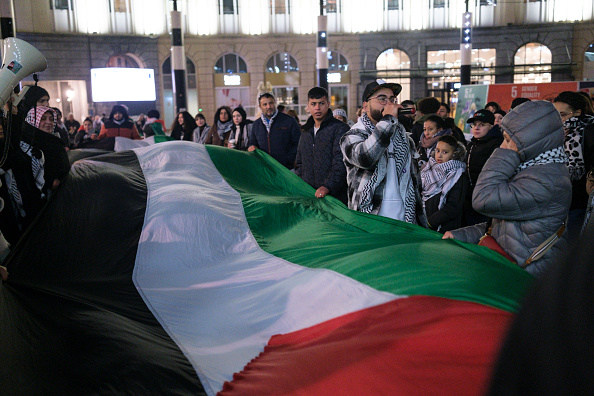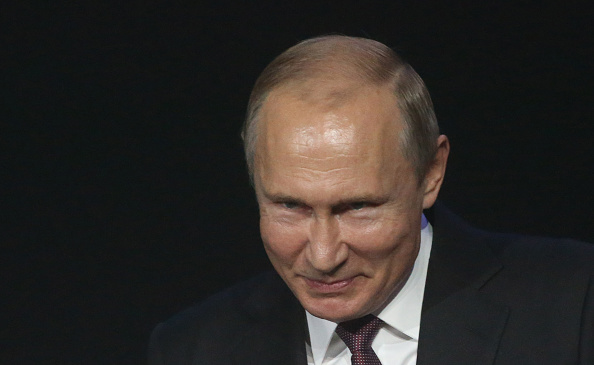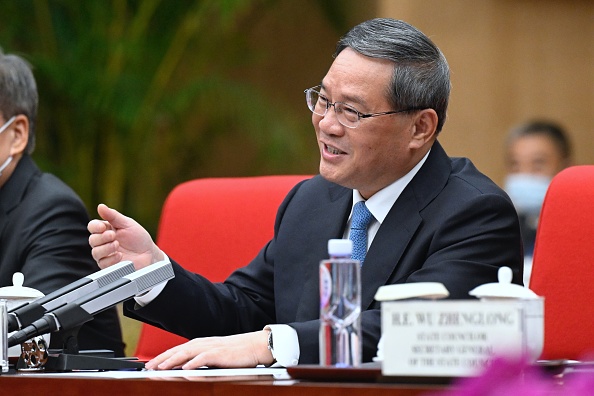EU countries have collectively overtaken China in terms of military spending, a new report has found, with overall expenditure surging worldwide.
Data gathered by the Stockholm International Peace Research Institute (SIPRI) found that member states increased their military spending to 24 per cent of the worldwide total following the outbreak of the war in Ukraine.
Europe is not the only region which saw an increase, with overall military spending worldwide soaring to unprecedented levels in 2023, reaching $2443 billion globally.
This marks the ninth consecutive year of growth in such spending and a 6.8 per cent increase from the previous year — the sharpest rise since 2009.
The surge is being mainly attributed to ongoing conflicts, particularly the Russian invasion of Ukraine, alongside escalating geopolitical tensions across Asia, Oceania and the Middle East.
Western nations appear to be at the centre of this increase, with the EU now outpacing China in terms of military spending, with the bloc as a whole spending double what the Asian powerhouse did last year.

With geopolitical tensions on its doorstep, Europe’s military burden has increased, notably regarding Ukraine thanks to the aid from NATO countries.
The United States remains the top global military power, allocating $916 billion to its budget for such in 2023 — some 37 per cent of total global spending.
That marked a 2.3 per cent increase from the previous year and a 9.9 per cent increase since 2014.
With military spending amounting to 3.1 times that of its nearest competitor, China, the US continued to prioritise research, development, testing and evaluation in anticipation of potential conflicts with technologically advanced adversaries.
Regarding China, the Asian state expended approximately $296 billion on its military in 2023, marking a 6 per cent increase from 2022.
Three German nationals have been arrested on suspicion of working with the Chinese secret service to hand over technologies that could be used for military purposes. https://t.co/4ynvgsExb5
— Brussels Signal (@brusselssignal) April 22, 2024
Accounting for 12 per cent of global military spending and 50 per cent within the Asia-Pacific region, China’s expenditure has been on a consistent upward trajectory for 29 years, albeit at a slower pace in recent years due to moderated economic growth.
According to media specialising in military capabilities, China aims to have up to six operational nuclear-powered aircraft carriers by 2040, with the vessels planned to be of comparable size and capability to their US carriers.
Russia, the third-biggest global military power, lags far behind in percentage terms with only 4.5 per cent of the total.
Although with military expenditure estimated at $109 billion in 2023, Moscow witnessed a notable 24 per cent increase from the previous year — and a 57 per cent rise since 2014.
Despite uncertainties surrounding its financial reporting, Russia’s military spending has likely reached its highest levels since the dissolution of the Soviet Union in 1991, driven by economic strategies to mitigate the impact of conflicts, particularly its involvement in Ukraine.
While the UK is not among the top spenders globally, it remains a significant player in the military landscape.
Its strategic interests, particularly in light of Brexit and geopolitical shifts, have maintained its robust defence expenditure.
As military spending continues its upward trajectory globally, fuelled by regional conflicts and geopolitical rivalries, the world finds itself in an era of heightened militarisation, reported SIPRI.

In terms of regions, Africa takes the lead in spending growth, with a 22 per cent expenditure increase between 2022 and 2023, followed by the continent of Europe at 16 per cent.
The increasing rivalry between Iran and Saudi Arabia — as well as the ongoing conflict in Israel — placed the Middle East as the third-fastest growing region with 9 per cent.
Asia and Oceania accounted for 4.4 per cent and the Americas came in last with 2.2 per cent growth.
The concentration of military expenditure in a handful of nations underscores the evolving power dynamics and strategic imperatives shaping international relations, according to the SIPRI report.
With uncertainties prevailing over future conflicts and diplomatic manoeuvres, the trajectory of military spending serves as a barometer of geopolitical stability and global power dynamics, it said.
NATO Secretary General Jens Stoltenberg has sharply criticised the European Union for failing to provide military assistance it had promised to Ukraine. https://t.co/kf0hAWREl2
— Brussels Signal (@brusselssignal) April 30, 2024





Post-Ukraine, everything has changed and there is no return to normal: Reconfiguring the State to deal with recurring crises is now a matter of survival